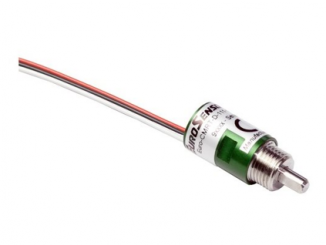
November is Magnetic Sensing Month at Magnetics Magazine!
Stay tuned and check the website frequently for new updates on the latest technology for magnetic sensing.
Ongoing demand for higher performance in industrial systems is driving the need for more precise current measurement, in addition to reliable operation, which often comes with the cost of increased board space or design complexity. In response, TI has developed what it says is the industry’s first zero-drift Hall-effect current sensor, enabling engineers to design systems that will provide consistent performance and diagnostics over a longer device lifetime, keeping its solution size compact without increasing design time.
Applying its expertise in both isolation and high-precision analog, the company recently introduced the TMCS1100 and TMCS1101. According to the company, their zero-drift architecture and real-time sensitivity compensation achieve total sensitivity drift over temperature of 0.45%, maximum, which is at least 200% lower than other magnetic current sensors, and a maximum full-scale offset drift of <0.1%, providing accuracy and reliability across a wide range of current. Their lifetime sensitivity drift is rated at 0.5% which is at least 100% lower than other magnetic current sensors, significantly reduces the performance degradation associated with system aging over time.

They enable the lowest drift and highest accuracy over time and temperature while providing reliable 3-kVrms isolation, which is especially important for AC or DC high-voltage systems such as industrial motor drives, solar inverters, energy-storage equipment and power supplies, says TI.
They are designed to facilitate high-voltage diagnostics and system monitoring while reducing equipment maintenance over time. Massive growth in computing and smart factories necessitates better monitoring and diagnostics to better understand energy consumption, system performance levels, equipment health, and operational status. Expanding the number and performance of distributed current sensor nodes enables a highly connected sensor network for automation. See www.ti.com.



